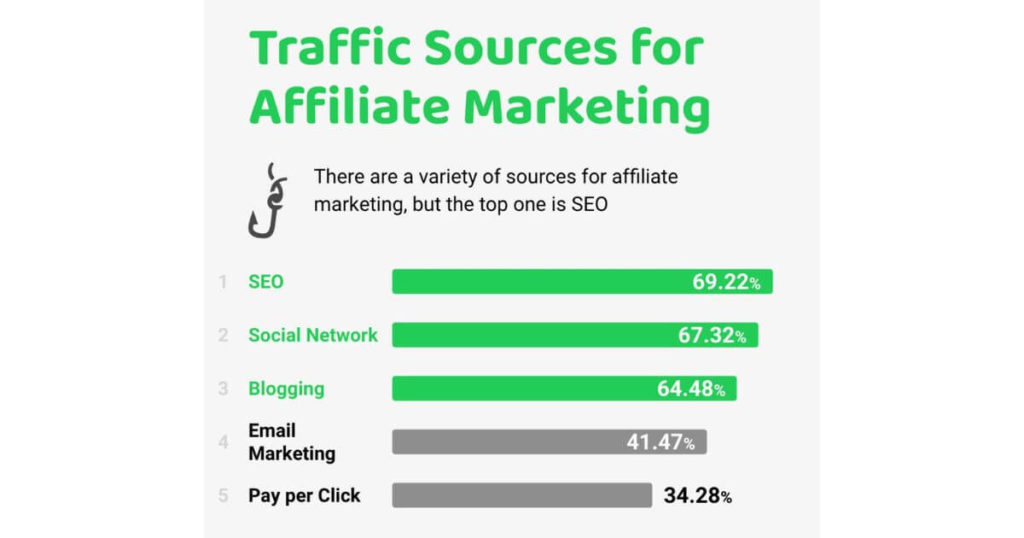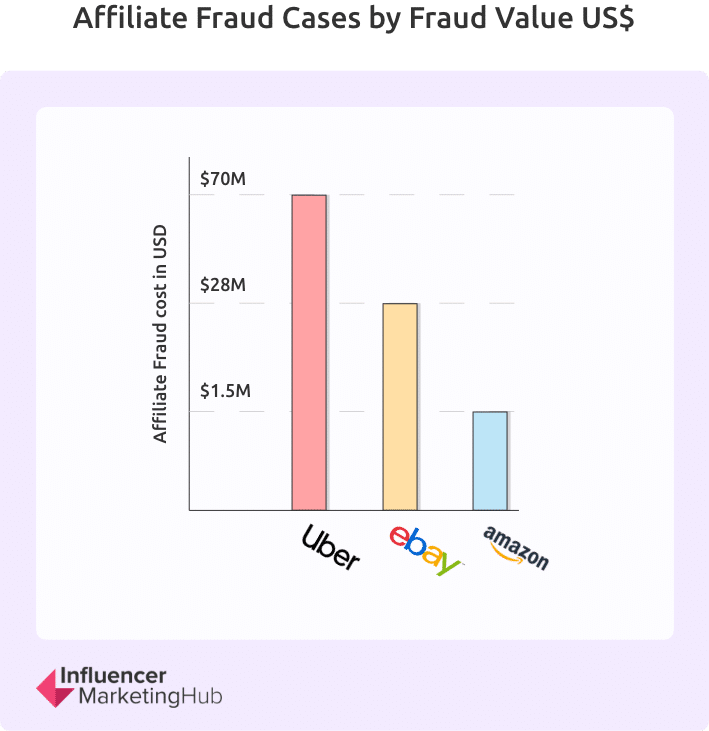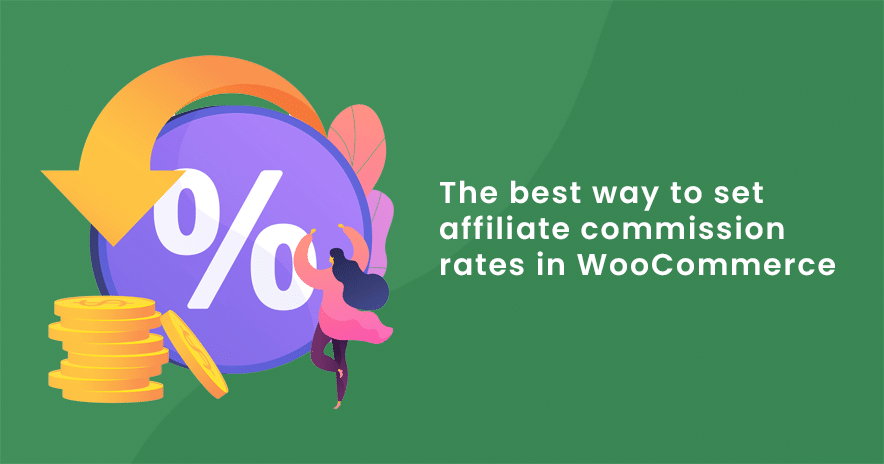24 Most Interesting Affiliate Marketing Statistics for 2024
Affiliate marketing is evolving at a rapid pace, and 2024 has been another crucial year in shaping its future.
In this article, we give an analysis of 24 of the top affiliate marketing statistics that highlight these significant developments.
$15.7 Billion Surge in Global Affiliate Marketing Spend
The affiliate marketing industry is experiencing incredible growth, with spending expected to reach $15.7 billion in 2024. This marks a substantial increase from just $2.7 billion in 2022, indicating a robust growth trajectory.
By 2027, the market is projected to grow even further, reaching a staggering $27.7 billion valuation.
Google Searches For “Affiliate Marketing” Increased By 170% since 2018
Google searches for “affiliate marketing” have continued to grow.
Between 2018 and 2023, search interest in the term has increased by over 170%.
This suggests the rising curiosity and engagement with affiliate marketing, both from individuals looking to enter the field and businesses seeking to leverage this marketing channel.
This data, drawn from Google Trends, illustrates how affiliate marketing has moved from a niche interest to a mainstream topic in the digital marketing conversation.

Affiliate Marketing Averages at 9% of Marketing Budget
Businesses are increasingly recognising the value of affiliate marketing, allocating an average of 9% of their marketing budget to it in 2021.
This allocation is on par with other significant marketing channels like email marketing, indicating the growing importance of affiliate marketing in overall business strategies.
83% of Shoppers Are Influenced by Affiliate Coupons
Coupons have become a powerful tool in influencing shopper behaviour, with 83% of shoppers citing them as a primary motivator during shopping trips. This statistic highlights the effectiveness of discount strategies in driving consumer decisions.
Additionally, 74% of US online shoppers tend to visit multiple affiliate, coupon, and review websites before finalising their purchase, indicating a savvy and comparison-driven consumer base.
Coupon Affiliate Websites Generated $1 billion in Revenue
The revenue generated by top coupon affiliate marketing websites has reached an impressive milestone, accumulating a total of $1 billion.
This figure highlights the significant impact and profitability of coupon-based affiliate marketing.
This billion-dollar revenue also reflects the effectiveness of coupon affiliate marketing in driving sales and customer engagement for various brands and retailers.
Affiliates Driving 23% of Brand Revenue
The impact of affiliate marketing on brand revenue is significant, with affiliates driving an average of 23% of a brand’s total revenue. Affiliate programs contribute to 15-30% of all sales for advertisers, making them a crucial part of many companies’ marketing strategies.
This statistic not only highlights the effectiveness of affiliate marketing in driving sales but also its role in expanding brand reach and fostering customer loyalty.
Affiliate Marketers Make on Average $85,255
With these significant affiliate marketing revenue statistics, there’s no surprise that affiliate marketers, influencers, and bloggers are making some great earnings for themselves.
The average annual earnings for full-time affiliate marketers in the US is $85,255, showcasing the amazing potential for lucrative returns.
This statistic indicates the viability of affiliate marketing as a career or side business, especially for those who can effectively leverage various marketing strategies and platforms.
Affiliate Marketing Is The Best Method of Customer Acquisition
Affiliate marketing stands out as the most effective channel for customer acquisition, leading at 20%.
This statistic places affiliate marketing ahead of other key digital marketing strategies, with paid and organic search trailing at 16%, and display ads at 15%.
This shows its efficiency in reaching and converting new customers.
Micro-Influencers Offering Targeted Engagement
The growing influence of nano and micro-influencers in affiliate marketing is reshaping the industry’s landscape.
These influencers, boasting follower counts between 1,000 and 50,000, offer highly targeted and authentic engagement with their audiences.
This trend reflects a shift towards more personalized and niche marketing strategies, where the focus is on building genuine connections and trust with consumers.
Over 90% Trust Influencers More Than Traditional Ads
The growth of influencer marketing and affiliate marketing is one of the most notable trends in the industry. Over 90% of consumers report trusting influencers more than traditional advertisements, underscoring the growing importance of authentic, influencer-driven content in marketing strategies.
This shift represents a fundamental change in how consumers interact with brands, seeking more personal, relatable, and trustworthy sources of information.
Emerging Preference for Direct Affiliate Relationships
While 83% of advertisers traditionally utilize affiliate networks, there’s a noticeable trend towards establishing direct relationships with affiliates.
This approach allows for more control, potentially higher margins, and tailored collaborations that can lead to more effective and efficient marketing campaigns.
Blogging Remains a Strong Affiliate Channel
Blogging continues to play a critical role in affiliate marketing, with over a quarter of affiliate brands utilising bloggers.
The relevance of blogging highlights its effectiveness in creating engaging, informative content that drives consumer decisions and adds value to affiliate marketing strategies.
In 2023 there were an estimated 32.7 million bloggers in the United States alone. Whilst the estimated global number of blogging websites is at around 600 million, with 43% of those being built on WordPress.
Publishers Relying More on Affiliate Marketing for Revenue
Affiliate marketing is increasingly becoming a vital revenue source for bloggers and publishers to earn more income.
With 31% of publishers citing it as one of their top three revenue generators and 9% considering it as their primary source of income, the strategy’s significance is expected to sustain or even grow into 2024.
This reliance is a testament to affiliate marketing’s effectiveness and resilience as a digital marketing strategy.
B2C Promotions is the Main Focus for 81.4% Affiliates
It is reported that 81.4% of affiliates now focusing predominantly on promoting business-to-consumer (B2C) products or services, while the remaining 18.6% work in the business-to-business (B2B) sector.
SEO is the Top Affiliate Traffic Source for 69% of Marketers
SEO’s role in affiliate marketing has become more critical than ever, with SEO traffic converting seven times more effectively than other methods and is considered the top affiliate traffic source by over 69% of marketers.
This highlights the importance of optimising affiliate marketing content for search engines to maximize visibility and conversion rates.

Influence of Social Media on Affiliate Marketing
Social media networks are utilised by more than 67% of affiliate marketers to connect with potential consumers.
With billions of active users on platforms like Facebook and Instagram, social media has become a critical channel for affiliate marketers.
This widespread use of social media for affiliate marketing reflects its power in reaching diverse and extensive audiences, enabling affiliates to engage effectively with niche groups and broader demographics.
Mobile Traffic Dominating Affiliate Referred Visits
Over 50% of affiliate-referred traffic now originates from mobile devices, a trend that underscores the increasing importance of mobile optimization in affiliate marketing strategies.
This shift towards mobile usage reflects changing consumer habits and the need for marketers to ensure that their content, links, and offers are effectively tailored for mobile platforms.
Voice Search’s $19.4 Billion Impact on Affiliate Marketing
The rise of voice search technology is influencing affiliate marketing strategies. With voice assistant e-commerce transactions projected to reach $19.4 billion, there’s an increasing need for content optimization for voice search.
This technology is changing the way consumers seek information and make purchasing decisions, prompting affiliate marketers to adapt their tactics to remain relevant and effective.
Transitioning from Third-Party Cookies to Alternative Tracking
The affiliate marketing industry is navigating the transition away from third-party cookies, a shift that poses both challenges and opportunities.
With the phase-out of third-party cookies, marketers are exploring alternative tracking technologies like first-party cookies, coupon codes, and other privacy-compliant methods.
This transition is reshaping the landscape of online advertising, emphasising the need for more transparent, user-friendly approaches to data collection and tracking.
The Growing Concern of Affiliate Marketing Fraud
The rise in affiliate marketing fraud poses a significant challenge to the industry. Digital advertising fraud, including affiliate marketing fraud, is projected to cost $88 billion by the end of 2023 and could escalate to $172 billion by 2028.
The case of Uber, which reportedly lost $70 million due to affiliate fraud, underscores the need for vigilance and informed strategies to prevent affiliate fraud.

SaaS Sector Offering Lucrative Affiliate Commissions
In the SaaS (Software as a Service) sector, affiliate marketing has emerged as a particularly profitable avenue. Affiliate commissions in this sector range from 20-70%, significantly higher than many other industries.
This lucrative range is reflective of the high value placed on software products and services, and the role affiliates play in reaching niche markets and specialized customer segments.
Home and Garden Sector has Grown By 209.72%
The home and garden sector has seen an extraordinary 209.72% growth in affiliate revenue year-on-year. This remarkable increase reflects the changing consumer preferences, particularly during the pandemic, where more people focused on home improvement and gardening projects.
The sector’s growth points to evolving market opportunities within affiliate marketing in all industries.
Fashion Leads the Growth in Popular Niches
Fashion stands out as the leading industry in affiliate marketing, closely followed by Sports/Outdoors and Health/Wellness.
The Health and Wellness sector is a titan in its own right, valued at over $5.5 trillion and expected to climb to $7 billion by 2025.
This growth is a testament to the evolving consumer preferences and the increasing emphasis on lifestyle and well-being. The popularity of these niches reflects a broader trend in consumer behaviour, where individuals are increasingly drawn to brands that align with their personal values and interests.
Increased Investment in Affiliate Marketing Software
The affiliate marketing software industry is attracting significant investment, with several companies raising over $1.5 billion across 232 rounds. In 2021 alone, $303.4 million was raised by software platforms focused on affiliate marketing.
Conclusion
Each of these statistics provides a deeper insight into the evolving landscape of affiliate marketing.
They highlight the importance of staying adaptable and innovative in a field that is rapidly changing and has significant opportunities.
How To Setup Your Own Affiliate Marketing Program:
Our plugin, Coupon Affiliates, is a great way to setup a coupon based affiliate program for your WooCommerce website.
It offers all the tools needed to setup an affiliate registration & approval process, generate coupon codes for your affiliates, and allow them to track their sales, commission, and other useful analytics.
Your affiliates can also keep track of their unpaid commission, and automatically pay them via Stripe, PayPal or Store Credit.
As the store owner, you have full control over your affiliate program. Generate admin reports, approve registrations, manage payouts, enable email notifications, and customise all the other plugin settings exactly to your requirements.
To learn more about the Coupon Affiliates plugin, click here or start your free 7 day trial now.
Elliot Sowersby is a WordPress developer from Yorkshire, United Kingdom. He is the founder and lead developer of Coupon Affiliates and RelyWP.




Leave a Reply